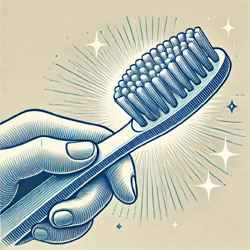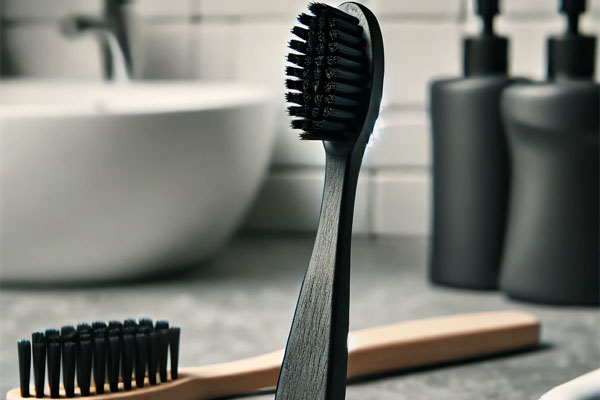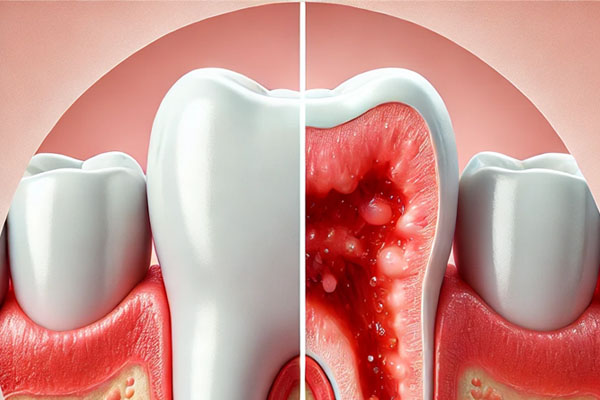Selecting the right manual toothbrush is essential for maintaining good oral hygiene. With so many different options on the market, knowing which toothbrush works best for your specific needs can make a significant difference in your overall dental health. In this guide, we’ll explore the key factors to consider when choosing a manual toothbrush, such as brush size, bristle type, and handle comfort. By understanding these aspects, you’ll be able to make an informed decision and keep your teeth and gums healthy.
1. Importance of Brush Size
The size of your toothbrush head plays a critical role in how well you can clean all areas of your mouth. A head that’s too large might make it hard to reach certain spots, such as the back molars, while a head that’s too small might not clean efficiently.
Considerations for Choosing the Right Size:
- Small to Medium Head: A smaller head is generally preferred because it can easily navigate tight spaces, making it more effective at cleaning between teeth and around molars. A medium-sized head strikes a good balance between coverage and maneuverability.
- Comfort and Reach: You should be able to comfortably reach all areas of your mouth, especially the back teeth, which are prone to plaque buildup.
For adults, a toothbrush head of 1 inch tall and ½ inch wide is often the most recommended size, while children should use a smaller brush designed for their age group to ensure they can reach all areas of their mouth effectively.
2. Understanding Bristle Types
The type of bristles on your manual toothbrush is perhaps the most important factor for protecting both your teeth and gums. Bristles come in different varieties, including soft, medium, and hard. Each has its specific purpose, but using the wrong bristle type could lead to damage.

- Soft Bristles:
- Most Recommended by Dentists: Soft bristles are gentle on both teeth and gums, reducing the risk of abrasion or gum recession.
- Effective Plaque Removal: They can clean effectively without harming your enamel or causing irritation to sensitive gums.
- Ideal for Most People: Especially good for individuals with sensitive gums or those prone to enamel wear.
- Medium Bristles:
- More Rigorous Cleaning: Medium bristles can offer a deeper clean for those without gum sensitivity, but they should be used with caution.
- Risk of Damage: Over time, medium bristles can cause gum recession or enamel erosion if too much pressure is applied during brushing.
- Hard Bristles:
- Not Generally Recommended: Although hard bristles can provide a strong cleaning action, they can be too abrasive for most people. They are more likely to cause damage to tooth enamel and lead to gum irritation.
- Suitable for Specific Needs: In rare cases, hard bristles may be used under the guidance of a dentist for specific dental conditions.
For most people, soft-bristled toothbrushes are the safest and most effective option for daily use, providing an ideal balance of gentle care and thorough cleaning.
3. Manual Toothbrush Handle Comfort
The handle of your manual toothbrush might seem like a minor detail, but it can make a significant difference in your brushing routine. A well-designed handle improves grip and control, allowing you to maneuver the brush with precision.
Key Features to Look For:
- Non-Slip Grip: Many manual toothbrushes come with rubberized or textured grips to ensure they don’t slip while brushing, especially when wet.
- Ergonomic Design: An ergonomic handle ensures that the toothbrush fits comfortably in your hand, reducing strain during brushing.
- Handle Length: Choose a toothbrush with a long enough handle to allow you to easily reach the back of your mouth.
4. How Often to Replace Your Manual Toothbrush
No matter which manual toothbrush you choose, it’s important to replace it regularly to ensure it continues to clean effectively. As time passes, the bristles deteriorate, making them less effective at plaque removal.
Replacement Guidelines:
- Every 3-4 Months: Dentists recommend replacing your toothbrush every three to four months. If the bristles appear frayed or worn sooner than that, it’s time to get a new one.
- After Illness: After recovering from a cold or illness, it’s also a good idea to replace your toothbrush to avoid reintroducing bacteria into your mouth.
Conclusion
Choosing the right manual toothbrush for optimal oral care involves more than just picking the first one you see at the store. By paying attention to factors like brush size, bristle type, and handle comfort, you can ensure you are taking proper care of your teeth and gums. Remember to opt for soft bristles for the most effective and gentle cleaning, and replace your toothbrush regularly to maintain good oral hygiene. With the right manual toothbrush, you’ll be on your way to a healthier smile.
For more dental care tips, be sure to check out our related articles on oral hygiene and toothbrush care!

